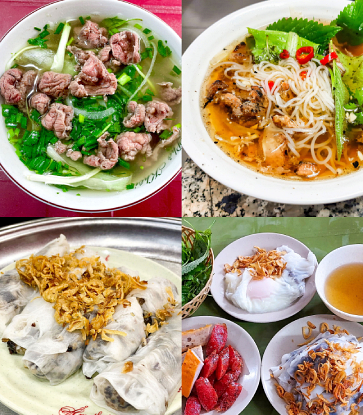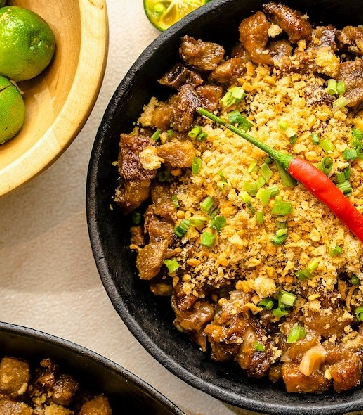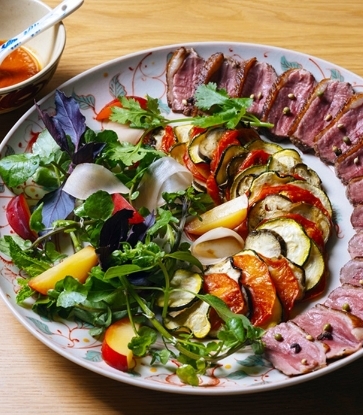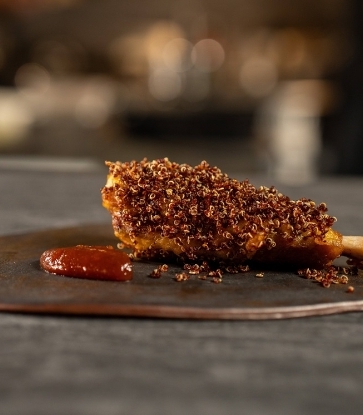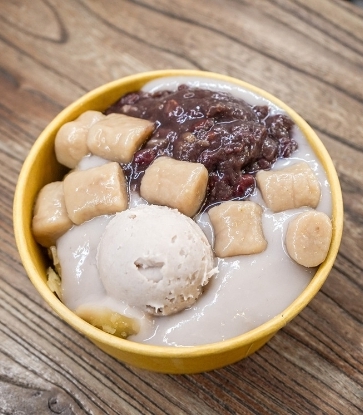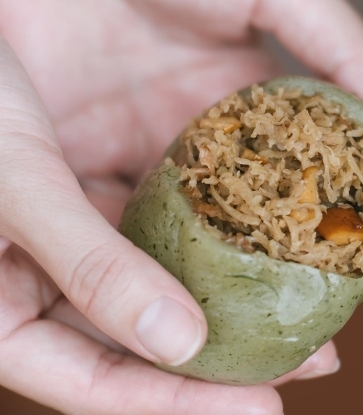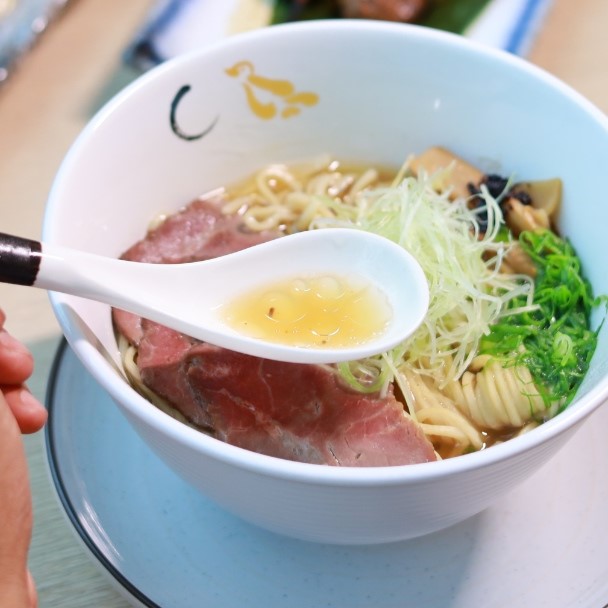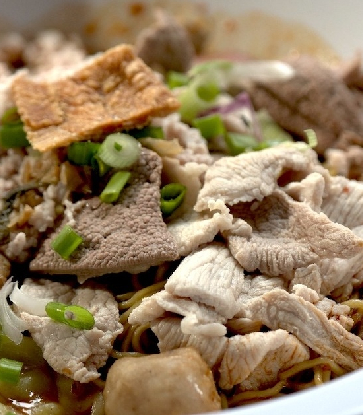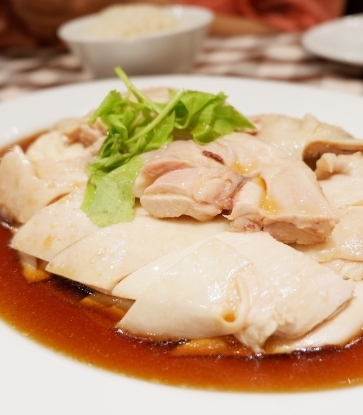The furnishings in Hồng Phát (Bib Gourmand, MICHELIN Guide Hanoi and Ho Chi Minh City 2023) in Ho Chi Minh City District 3 have modernised over the decades, but the restaurant’s atmosphere has changed little.
Seasoned chefs still spend hours perfecting their signature broth in gigantic cauldrons with bone marrow, dried seafood, and meaty cuts of pork. They still pour this broth over rice noodles before adding tiger shrimp, braised offal, blood cake, bean sprouts, and an assortment of garden greens and herbs. The hearty noodle soup – known as hu tieu (hủ tiếu) – is still served in glass bowls and delivered to crowded tables of nattering locals.

In Vietnam, hu tieu doesn’t dominate street corners like pho and bun, and yet it is still a mainstay in the constellation of southern noodle soup dishes. You’d be hard-pressed to find a neighbourhood that doesn’t serve hu tieu in Ho Chi Minh City, formerly and colloquially Saigon or any of the surrounding provinces.
What’s in a name?
All of Vietnam’s noodle soups tell a story. Bun bo (spicy beef noodle soup) from the former imperial city of Hue came about during dynastic times. Cao lau (thick rice noodle soup with pork) in Hoi An has Japanese and Chinese influences, a remnant of the town’s mercantile history. Some believe that bun thang (herby chicken noodle soup) from Hanoi originally had medicinal properties – a kind of Vietnamese chicken soup cure-all. Perhaps the most well-known is the fable of pho, which stretches back to colonial times and can claim to have French, Chinese, and Vietnamese roots.So what’s the story behind hu tieu?

The biggest clue is the full name of the dish served at Hồng Phát: hu tieu Nam Vang. Foodies familiar with Southeast Asian cuisine might notice that the dish sounds (and tastes) a little like other dishes in the region: kuyteav in Cambodia, kuai tiao in Thailand, kyay oh in Myanmar, and even char kway teow in Malaysia and Singapore. Just like hu tieu, all these dishes have roots in southern China and were brought to Southeast Asia by merchants centuries ago. From there, these dishes responded and adapted to the local tastes, climates, and available ingredients. These days, kyay oh and char kway teow seem like completely different dishes, even though they share similar roots.

But what about Nam Vang?
“In Vietnamese, ‘Nam Vang’ translates to ‘Phnom Penh’, says Đoàn Hồng Tuyến (though he goes by Tim), public relations manager at Hồng Phát. “My mother is among the group of people who brought back many delicacies from Cambodia to Saigon.” Đoàn handles PR for Hồng Phát, but he is also the youngest son of the restaurant’s founder – Đặng Thị Nguyệt – so he knows the origin story well.
Born from conflict
A Vietnamese born in Phnom Penh in 1948, Chef Đặng began work in a restaurant when she was 13. In the 1960s, the city was a culturally vibrant place with many different communities, including Khmer, Vietnamese, and groups from southern China. Chef Đặng was a young helper who did odd jobs around the restaurant, but she always hoped to have a place of her own one day. When she thought nobody was paying attention, she would steal moments to pick the brains of the experienced Chinese chefs.“Sometimes the owner would stop her from staring and ask her to return to work,” laughs Đoàn. But it seemed Chef Đặng had discovered her talent for cooking. She could taste complex dishes and then identify the ingredients, explains Đoàn, and later she was able to “create her version of that dish.”

Though Chef Đặng never received any formal training, she worked in restaurants throughout her teenage years until she met her future husband, also Vietnamese, and started a family. However, a political coup in Cambodia in 1970 led to an increase in anti-Vietnamese sentiment there. Chef Đặng and her husband decided to leave Phnom Penh and move to Saigon, despite the war that raged between North Vietnam and South Vietnam.
During the early 1970s, Chef Đặng focused on raising her family, but she hadn’t forgotten about the dream of opening her own restaurant. She first attempted a pho shop with her brother, but it didn’t take off. In 1975 she opened a humble stall selling hu tieu Nam Vang in her parents-in-law’s house – and Hồng Phát was born.

Versions of hu tieu already existed in Saigon, including hu tieu bo vien (with beef meatballs) and hu tieu mi (with egg noodles), but this new version was different. Not only did the recipe have traits picked up from Cambodia and use sundried noodles, which create a chewier texture, but Chef Đặng decided to add her unique touches. The Saigonese have a taste for fresh greens and seafood, so Chef Đặng experimented by adding tiger shrimp, crown daisy, Chinese celery, bean sprouts, lettuce, and chives. She also added quail eggs, braised offal, stewed blood cakes, and her very own take on minced pork.
These innovations proved a hit. In 1979 Chef Đặng invested in glass bowls imported from France, differentiating it from Vietnam’s other noodle soups, which were served in ceramic bowls. This gave the dish the signature aesthetic that it has today.
Hồng Phát today
Hồng Phát occupies the same location it did in 1975, but the space and menu have expanded. Hu tieu, which can be served as a noodle soup or dry with soup on the side, remains the signature and customer favourite. Other noodle dishes include mi vit tiem (noodle soup with braised duck) and mi hoanh thanh (noodle soup with wontons), which both use egg noodles in place of rice noodles. Non-noodle alternative mains include banh mi bo kho (beef stew and baguette) and com chien Duong Chau (Yangzhou fried rice). Cha gio tom cua (fried spring rolls with shrimp and crab), banh bao (baozi, or Chinese steamed pork buns), and pâté chaud (French pâté pastries) serve as sides to enhance the meal.
While Hồng Phát’s expanded menu reflects the diversity of Vietnamese cuisine, with its notable Chinese and French influences, the back dining room of the restaurant reveals where the restaurant’s true roots lie. Here, peering over the crowded tables, is a large wooden sculpture panel depicting Bayon, one of the most iconic temples of Angkor, the ancient Khmer capital.
“When I first saw the sculpture panel, I knew that it was very rare in Vietnam,” says Chef Đặng, who snapped up the piece and mounted it on the wall. “I want to show our customers where are we originally from.”
Illustration image: © Hồng Phát






